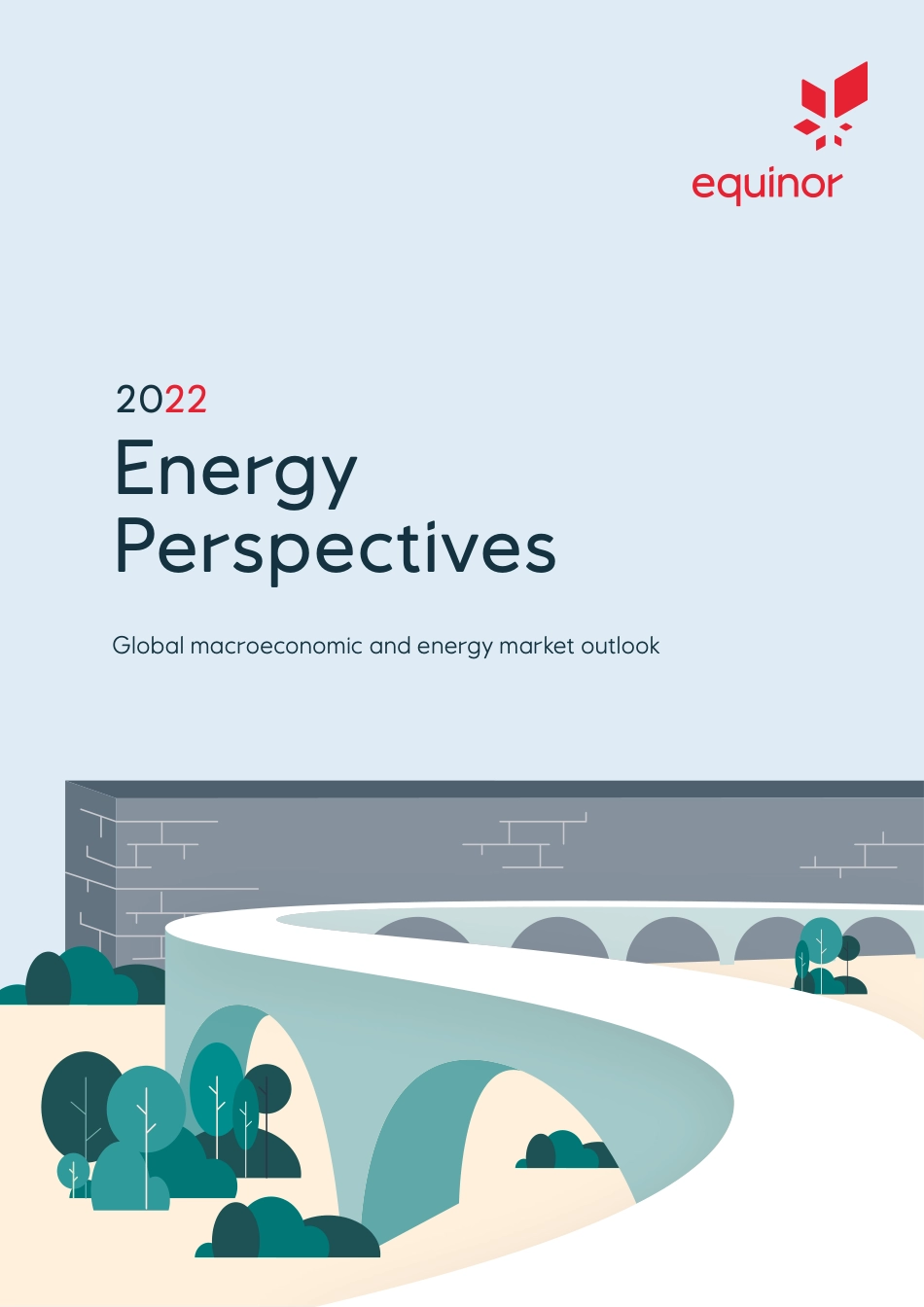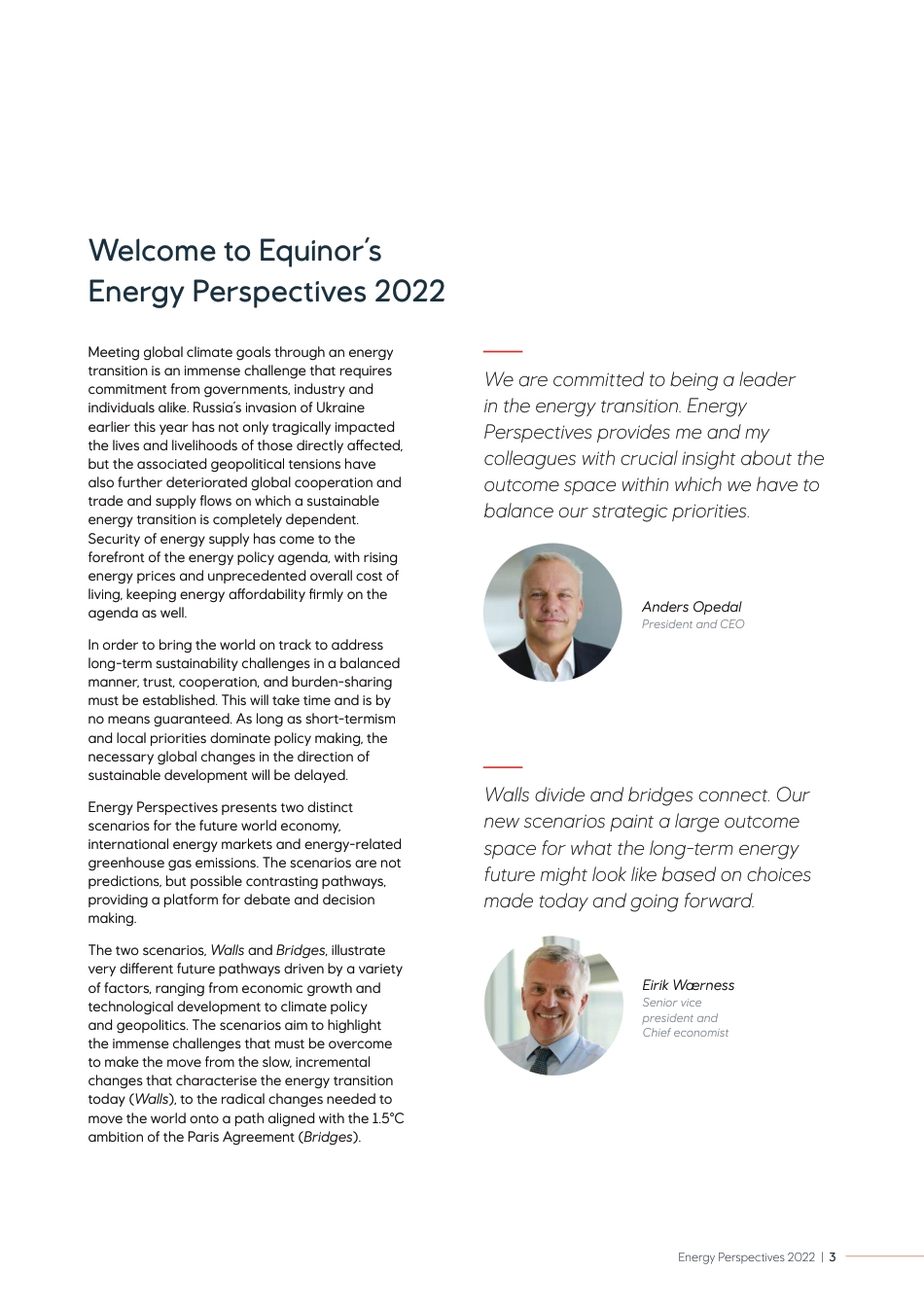2022Energy PerspectivesGlobal macroeconomic and energy market outlook2 | Energy Perspectives 2022WE BUILD TOO MANY WALLSAND NOT ENOUGH BRIDGESSir Isaac NewtonEnergy Perspectives 2022 | 3 Welcome to Equinor’s Energy Perspectives 2022Meeting global climate goals through an energy transition is an immense challenge that requires commitment from governments, industry and individuals alike. Russia’s invasion of Ukraine earlier this year has not only tragically impacted the lives and livelihoods of those directly affected, but the associated geopolitical tensions have also further deteriorated global cooperation and trade and supply flows on which a sustainable energy transition is completely dependent. Security of energy supply has come to the forefront of the energy policy agenda, with rising energy prices and unprecedented overall cost of living, keeping energy affordability firmly on the agenda as well. In order to bring the world on track to address long-term sustainability challenges in a balanced manner, trust, cooperation, and burden-sharing must be established. This will take time and is by no means guaranteed. As long as short-termism and local priorities dominate policy making, the necessary global changes in the direction of sustainable development will be delayed. Energy Perspectives presents two distinct scenarios for the future world economy, international energy markets and energy-related greenhouse gas emissions. The scenarios are not predictions, but possible contrasting pathways, providing a platform for debate and decision making. The two scenarios, Walls and Bridges, illustrate very different future pathways driven by a variety of factors, ranging from economic growth and technological development to clim...



